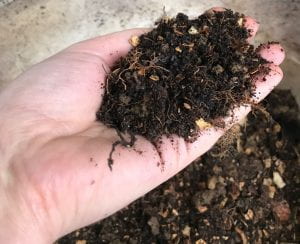Anaerobic soil disinfestation (ASD) is an organic means of fumigating soil to remove soilborne diseases, nematodes, and weed seeds.
To watch a hands-on demonstration of ASD in a high tunnel, click on this link.
We ran a blog post detailing ASD earlier in 2021, after attending this workshop in person. Below is a re-post of that article:
Anaerobic Soil Disinfestation as pre-plant natural fumigation – Workshop Summary
Ohio Central State University and the United States Department of Agriculture (USDA) organized a workshop demonstrating how to use anaerobic soil disinfestation (ASD) to organically fumigate soil. It was held on August 26, 2021 in Ashland, Ohio. The workshop was hosted by Jeni and Bob Filbrun, who manage the farm Earthin Goods.
Cornell Cooperative Extension, with funding support from Northeast SARE is working with Maine Organic Farmers and Garden Association to look into ASD’s efficacy for strawberry production in the Northeast US.
ASD was discovered by Japanese and Dutch researchers after studying the decrease in crop diseases after field flooding. This technique is gaining traction in the United States as an alternative to fumigation with pesticidal gases. By promoting the activity of anaerobic microbes in soil for several weeks, pathogens and weed seeds can be suffocated and killed. The soil is then allowed to purge the gases for a couple days. After this the growers are ready to plant.
The demonstration at Earthin Goods was done under a high tunnel for tomato production. Jeni and Bob have been using ASD for the past 4 years in this high tunnel. Dr. Anna Testen, a plant pathologist for the USDA, walked us through the essential steps of ASD.
- Plan to do ASD between mid-spring (March – April) and early fall (August -September). The soil needs to get up to 85˚F during the process, therefore doing ASD in colder months would not work well.
- Remove all plant material from the treated areas.
- Apply a carbon source to the top 6 – 8 inches of the soil at a rate of 0.413 lbs per square foot of area. This is equivalent to 9 tons per acre. Some people apply at rates as low as 4 tons per acre / 0.184 lbs per square foot. This demonstration used a combination of wheat middlings and molasses. The wheat midds were added first. Wheat midds are hard and fine, they need to be roto-tilled into the soil to be mixed in well. Molasses should be diluted to 1/3 or 1/4 volume with water. Molasses can simply be poured onto the soil with watering cans.
- Irrigate the soil so that it is fully saturated.
- Cover the soil in a thick plastic to trap the gases. A plastic mulch between 2 – 4 mm thick works well. Do not use biodegradable mulches. Cover edges of mulch with sterile bagged soil so no air can enter.
- Keep soil moist for 3 – 5 weeks. If soil is loamy and high in organic matter, additional watering is not required. If soil is well-drained, sandy, or gravely, irrigate during dry spells.
- After 3 – 5 weeks, poke holes in the plastic to allow the gases to release. The soil should smell like rotting materials because the anaerobic bacteria create unpleasant gases, such as acetic acid and butyric acid.
- After 5 – 7 days, plant your next crop.
Central State University filmed the event and will be releasing a workshop video later this year.
To learn more about ASD, check out Ohio State University’s fact-sheet on the subject or look through the University of Florida’s informative PowerPoint Presentation.
It is well established that ASD is a good way to prevent diseases in vegetable crops. Strawberry producers in California also rely on ASD as an organic disease control method.

